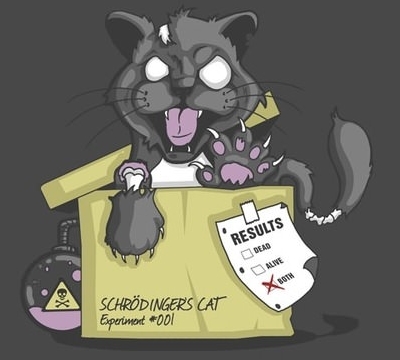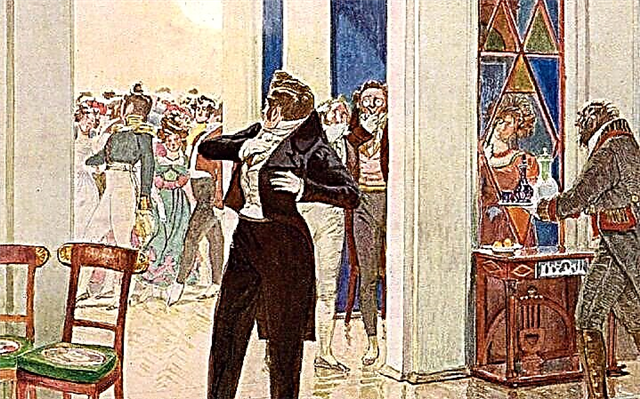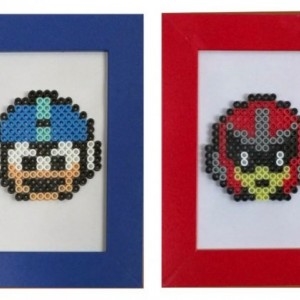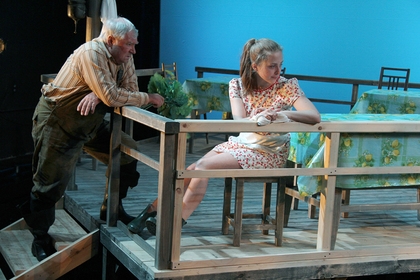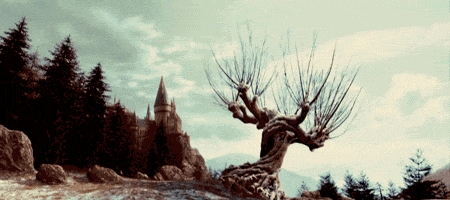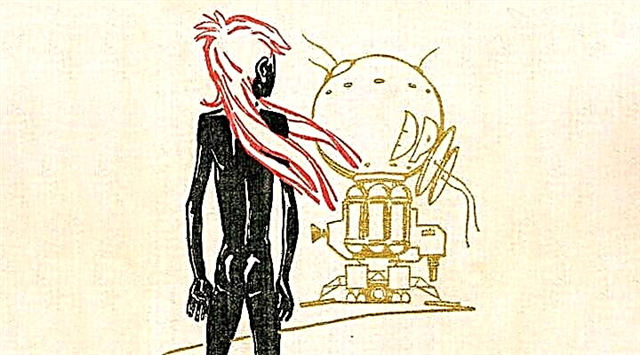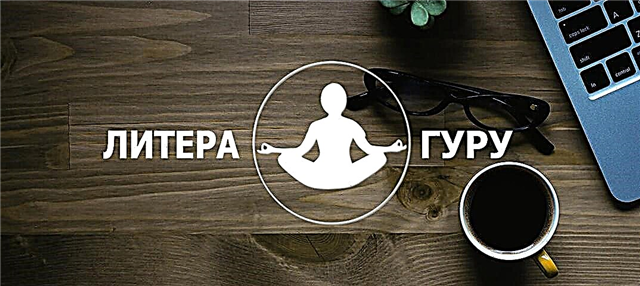Nikolai Alekseevich Nekrasov is rightly considered the author of Russian civil lyrics. Most vividly, he showed his talent in writing lyre-epic works, permeated with the theme of national grief. The author acted as a fighter with the feudal system, and the poem “Troika” is one of the manifestations of this active literary struggle. We will dwell on it in more detail.
History of creation
Lyro-epic poem "Three" was written in 1848. At this time, Nekrasov and Panaev purchased the journal Sovremennik for borrowed money. The author only rose from the bottom - there was no money, and the first literary collection "Dreams and Sounds" in 1840 did not gain public success, was severely criticized by Belinsky and subsequently destroyed by the writer himself. And then the Nekrasov Troika was born, which quickly gained general recognition and gained popularity for the poet. The poem is dedicated to simple serfs, in particular, Russian women from villages. Nekrasov, of course, had a desire to convey the tragedy of the situation of the people to people from the upper class who could influence people's destinies.
Living in the 19th century, when the people's discontent with serfdom grew steadily, he created truly topical works. He was a novelist, publicist, co-publisher of the most popular in those years, the magazines "Contemporary" and "Domestic Notes".
Genre, direction and size
By genre, the poem belongs to the civilian lyrics. Nekrasov, on the other hand, defined himself as a poet of the Gogol style, the so-called “natural school”, which puts at the forefront a realistic depiction of current events, human characters and destinies. In “Troika” there is no artificially beautiful romantic fog covering the real state of things - everything has been said directly and dealt with. The poet did not create this poem so that romantics and detached dreamers relish an elegant syllable and think about the beauty of being. He exposed the ugliness of the serfdom and made people look at them unvarnished.
The poem is written by a three-foot anapaest. This means that the stress in each line falls on the third syllable, and there are three such stresses. For example, the very first lines: “What are YOU LOOKING FOR THE ROAD / AWAY FROM A GREAT FRIEND ...”. This size is very melodic and therefore considered a song, not without reason a romance was written on Troika later. The rhyme in the entire work is cross-linked, and only in the last quatrain - adjacent. Male and female rhymes harmoniously combine with each other.
Images and Symbols
- In the poem, the author is presented in the role lyric heroaddressing a rural girl. A sad tone is heard in his appeal, an experience for her present and future, one can feel how attentively he treats her. On the one hand, he admires her beauty and hot youth, on the other - he predicts a bitter fate. He probably would not want to talk about what awaits this beauty later - but he must say. It is obliged then that the girl does not run after the trio, does not feel hope for impossible happiness with a passing cornet, which, although she has looked at her, but still passes by, will immediately forget her and will never return. After all, if she is disappointed in her empty dreams, it will be more difficult for her to accept her real bitter fate.
- This simple peasant girl - the main character of the poem, the plot is focused on her. Her oriental beauty is so charming that just the look of this "old man's black-browed savage will ruin gifts, in the heart of a young man will throw love." She was admired and cornet, passing by on a troika. She is playful, alive, beautiful, but not for long: a carefree time will pass, and unwanted marriage will destroy this girl, make her a deeply unhappy and ugly old woman who prematurely left for the grave. Other heroes who will have a devastating effect on the peasant woman are a “husband-and-guard”, who loves vodka and assault, and mother-in-law is the same victim of circumstances that will bend her “in three deaths”.
Themes and mood
- The main theme of the work is the bitter fate of a serf girlwhich she can’t avoid. Nekrasov says that there is no way out, and it is very bitter to realize for ordinary people, especially for Russian women. Their life is especially hard, it comes down to a meaningless, patient existence, flies quickly, squeezing all the juices out of them.
- Our attention is also attracted beauty theme and relationship to her. Charm girls trample circumstances and people. No one in her midst will appreciate her youth and beauty.
- The main problem in the poem is lack of will and social insecurity of women. Peasants are practically not free over their fate - they are always controlled not only by the master, but also by their husband and mother-in-law, they are forced to marry not out of love, but only on someone’s whim, and endure any humiliation, drag themselves to colossal housework. Men-serfs are easier, they are free to some extent to manage their life the way they want.
- One more problem - social injustice. Boys and girls cannot be together if they are divided by inequality. Cornet and would be happy to marry a rural nymph, but his parents only laugh at his stupidity. Marriage must be profitable and decent, with love it has little in common. So the peasant woman cannot count on a decent husband, no matter how smart and beautiful she may be.
- The mood of the poem generally sad, heavy, depressing. But the first few quatrains are in a slightly different, lighter and more reassuring atmosphere. This does not mean that these quatrains set an absolutely cheerful tone for the first part of the work. Already from the first lines you feel sad notes. The reader already understands that such a mood will continue to sound and may only worsen. And so it happened when in the sixth quatrain the lyrical hero - he is the author - says: "Yes, it didn’t fall to you: you will go for a slut man." Further, the tone of the story is tragic, doomed, without a hint of a bright future. It is preserved at the very end, after the narrator returns to real time - the same troika and the beauty running after her.
Main idea
The main idea of the work is that serfdom is the real scourge of Russia, which brings people a lot of grief. Complete lack of freedom, terrible material conditions in which people survive and die early - all these are consequences of a deeply unfair system in which innocent people suffer. The saddest thing is that for serfs there is no independent opportunity to change their situation for the better, and if there is a way out, it is only for the most desperate - and this is a riot, a revolution. But such activity can lead to the death of a person under the sticks and rifles of gentlemen, which people do not want, clutching at any - even poor and limp - life.
But it is wrong to enslave a person to the framework, it is wrong to consider his life only as a means of achieving his goals. He, a serf, has the right to the same free and happy life as representatives of the upper world. Everything should depend on the personal achievements of each individual person, and not on birth in a particular social stratum. Nekrasov, who is not indifferent to the fate of the people, does not call for action here directly, but allows readers to independently draw conclusions, show sympathy and participation in this defenseless social unit of society. This is the meaning of his appeal to people.
Means of artistic expression
Perhaps the most basic expressive tool in Troika is the stylistic figure of “appeal”. It appears in lines throughout the poem. It also does not do without epithets, such as the “cunning eye”, “life is full and easy”, “black work”, “dull patience”, “dying force”, “dreary anxiety”, “mad three”. As can be seen from the examples, basically all the epithets are negative, associated with suffering and hopelessness.
There are also comparisons designed to describe the beauty of the girl: "hair is black as night", "black-browed savage." The work is rich in personifications: “the heart sounded the alarm”, “the face flashed”, “the scarlet ribbon curls”, “the look ... will ruin gifts, .. will throw love”. Phraseologism “to bend at three deaths” helps to convey the degree of despotism with which the mother-in-law will torment the beauty.
So we conducted an analysis of such an outstanding work of Nekrasov as "The Three". This is a very strong image of joyless reality, which was needed by Russian society of the nineteenth century. "Troika" was a creative take-off in the literary career of a writer, its successful beginning. Subsequently, he will write many well-known lyric-epic works on the theme of the common people, which had a significant impact on people of the period before and after the abolition of serfdom.

